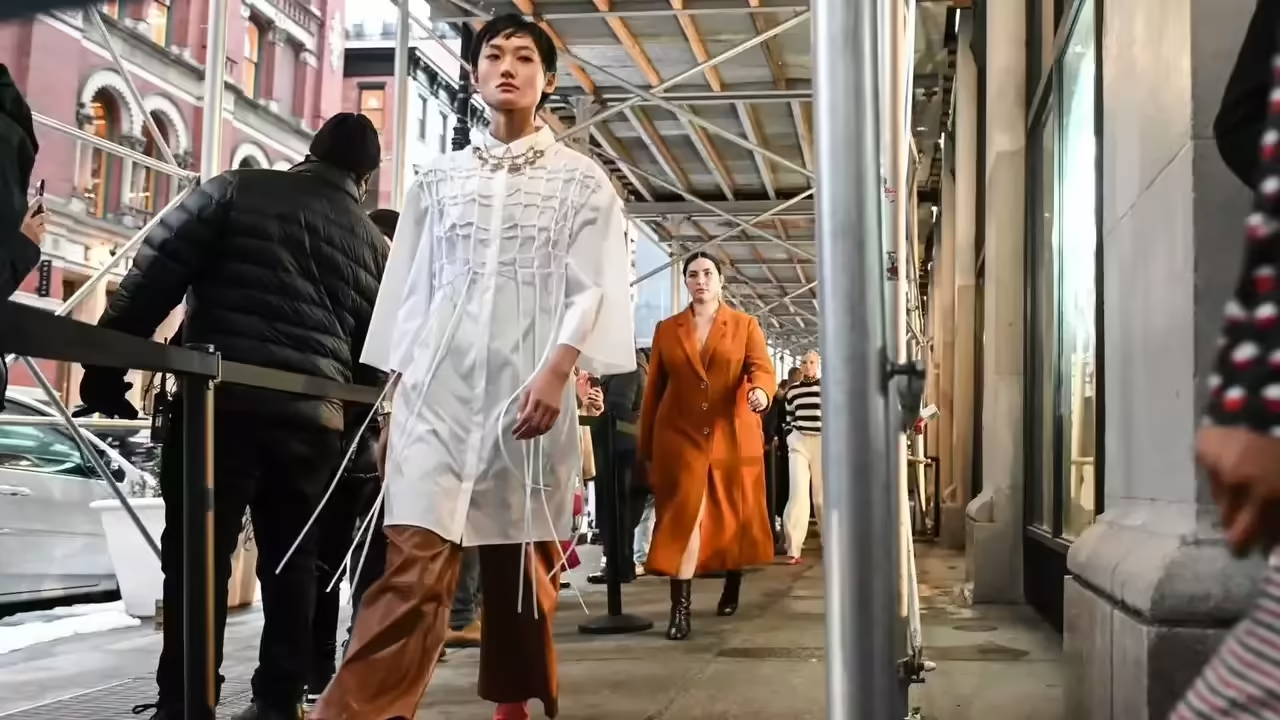
Minimalist interior design has gained popularity in recent decades due to its focus on simplicity, functionality, and timeless elegance. Inspired by the minimalist philosophy advocating for reducing everything to its essential essence, this design style seeks to eliminate excess and create spaces that are clean, organized, and tranquil. In this article, we will explore the basic principles of minimalist interior design and how you can incorporate them into your own home.
Simplicity and Clarity
At the heart of minimalist design lies the idea of simplification. This entails stripping spaces of unnecessary elements and retaining only the essential. Minimalist interiors tend to feature clean lines and simple shapes. Furniture is often functional and unadorned, with a preference for materials such as metal, wood, and glass.
Color and Texture
Minimalism is often associated with a palette of neutral colors, such as white, black, gray, and earth tones. These colors create a sense of calm and spaciousness in spaces. However, touches of color can also be incorporated subtly to add visual interest without overwhelming the environment.
In terms of texture, minimalism embraces simplicity. Smooth and polished surfaces that reflect light and create a sense of spaciousness in the space are preferred. Natural wood, concrete, and steel are popular choices for surfaces and finishes in this design style.
Space and Functionality
Space is a fundamental element in minimalist design. The aim is to maximize the sense of openness and fluidity, so it’s important to keep spaces clear and unobstructed. This means avoiding excess furniture and accessories and maintaining a tidy and well-organized layout.
Functionality is another key aspect of minimalist design. Furniture and accessories should be both aesthetically pleasing and practical in their use. Pieces that serve a specific function and don’t take up more space than necessary are preferred.
Light and Open Space
Natural light plays a crucial role in minimalist design as it enhances the sense of openness and spaciousness in spaces. Natural light sources should be maximized by keeping windows clear and using light curtains that allow light to pass through. Additionally, artificial lighting should be discreet and functional, avoiding ornamental fixtures and opting for simple and efficient designs.
Open space is a distinctive feature of minimalist design. Minimalist interiors often feature open and airy spaces where different areas are seamlessly connected without interruptions. This creates a sense of harmony and fluidity in the space, promoting relaxation and well-being.
Fundamental Principles of Minimalist Design: Creating Serene and Functional Spaces
The Importance of Space and Functionality in Minimalist Design
In minimalist design, space and functionality are fundamental aspects that not only define the aesthetic of the environment but also deeply impact the experience and well-being of those who inhabit it. These two elements work in harmony to create serene, efficient, and visually appealing spaces. Exploring the importance of space and functionality in minimalist design reveals how this approach goes beyond mere aesthetics and becomes a lifestyle.
Space as a blank canvas: In minimalist design, space is considered as a blank canvas that allows freedom of movement and mental clarity. The absence of clutter and the careful arrangement of elements create a sense of spaciousness and calmness that facilitates relaxation and concentration.
Promotes mental clarity: A minimalist space, clear and tidy, contributes to mental clarity and emotional well-being. By reducing the amount of visual stimuli and simplifying the environment, concentration is facilitated and stress is reduced, allowing the mind to relax and focus on the essential.
Optimization of space usage: Functionality is essential in minimalist design, as each element of space must serve a specific function. This involves careful planning and organization to optimize the use of available space, creating environments that are efficient and comfortable to inhabit.
Flexibility and versatility: Although minimalist design tends to favor simplicity, it also allows for great flexibility and versatility in space configuration. Modular furniture and accessories, as well as smart storage solutions, allow the environment to be adapted to changing needs and make the most of every available centimeter.
Encourages human interaction: By eliminating excess furniture and accessories, minimalist design creates open and inviting spaces that encourage human interaction and communication flow. Common areas become meeting and gathering places, promoting connection and exchange between people.
Sustainability and conscious consumption: Minimalist design is also closely related to sustainability and conscious consumption. By reducing the number of objects and materials used in design, environmental impact is minimized, and a more responsible and environmentally friendly lifestyle is encouraged.
Color Palette in Minimalist Design: Serenity and Sophistication
The color palette plays a crucial role in minimalist design, significantly contributing to the creation of serene, balanced, and visually appealing spaces. In minimalist design, a palette of neutral colors and soft tones is preferred, creating a sense of calm and harmony. Here is a detailed exploration of the color palette in minimalist design:
Pure whites: White is the quintessential color in minimalist design. It represents purity, clarity, and simplicity. White spaces convey a sense of spaciousness and brightness, while providing a neutral canvas that allows other design elements to stand out.
Neutral tones: Neutral tones such as beige, gray, and sand are fundamental in minimalist design. These soft and warm colors create a sense of tranquility and sophistication in the space. They are used both on walls and furniture and accessories to create a cozy and elegant atmosphere.
Black: Although it may seem contradictory, black is also a common color in minimalist design. It brings a touch of contrast and depth to spaces, creating focal points and adding a sense of elegance and sophistication. It is used sparingly to highlight certain design elements.
Touches of color: Although the color palette in minimalist design tends to be neutral, touches of color can be incorporated subtly and strategically. This can be done through accessories such as cushions, rugs, or artwork, which add visual interest without overwhelming the environment. Preferred colors are often soft and muted tones that complement the minimalist aesthetic.
Natural wood: Although technically not a color, natural wood also plays an important role in the color palette of minimalist design. Wood brings warmth and texture to the space, creating a gentle contrast with neutral tones and adding a touch of nature and serenity to the environment.
Contrast lines: In addition to careful color selection, minimalist design often incorporates contrast lines to add visual interest and depth to the space. This can be achieved through the use of different materials such as metal, glass, or concrete, which create focal points and highlight the structure and architecture of the environment.
Furniture and Accessories: Less is More in Minimalist Design
In minimalist design, the philosophy of “less is more” applies not only to aesthetics but also to furniture and accessories. This approach seeks to eliminate excess and prioritize functionality, simplicity, and elegance in the selection of each element. Here we explore how the principle of “less is more” is reflected in furniture and accessories in minimalist design:
Functionality over ornamentation: In minimalist design, furniture and accessories are chosen for their functionality rather than their ornamentation. Each piece must have a clear reason for being and serve a specific function in the space. Clean lines and simple shapes that emphasize utility over decoration are preferred.
Clean-lined furniture: Furniture in minimalist design tends to have clean and geometric lines. Simple and unadorned designs that create a sense of order and clarity in the space are preferred. Modular and multifunctional furniture is especially valued for its ability to adapt to different needs and optimize space usage.
Multifunctional pieces: In a minimalist space, each piece of furniture often has multiple functions. For example, a sofa can become a bed, a coffee table can have integrated storage space, or a bookshelf can function as a room divider. This allows for maximizing space efficiency and versatility.
Negative space: Negative space, or empty space, is an important element in minimalist design. It is used strategically to create visual balance and highlight the beauty of positive elements in the space. Instead of crowding a space with furniture and accessories, leaving areas empty to allow energy to flow freely and breathe an atmosphere of tranquility is valued.
Carefully selected accessories: In minimalist design, quality is prioritized over quantity when it comes to accessories. Pieces that complement the space’s aesthetic without overwhelming it are carefully chosen. Accessories are often simple and functional, such as lamps with simple designs, high-quality textiles, and discreet decorative objects. Each accessory is seamlessly integrated into the environment, adding visual interest without detracting from the overall simplicity of the design.
Clear spaces: Ultimately, the goal of furniture and accessories in minimalist design is to create clear and tidy spaces that promote calmness and mental clarity. By reducing visual clutter and focusing on the essentials, a serene and inviting environment is created that encourages relaxation and contemplation.
Lighting: Emphasizing Simplicity in Minimalist Design
In minimalist design, lighting plays a crucial role in emphasizing the simplicity and elegance of the space. Carefully designed lighting can enhance key elements, create a serene atmosphere, and highlight the beauty of clean and tidy spaces. Here we explore how lighting contributes to emphasizing simplicity in minimalist design:
Natural light: Natural light is highly valued in minimalist design. Large windows and glass doors allow sunlight to enter the space, creating a sense of spaciousness and brightness. Maximizing the use of natural light by keeping windows clear and using curtains or blinds that allow light to pass through is important.
Simple and discreet fixtures: Fixtures in minimalist design are often simple and discreet, without unnecessary ornamentation. Clean and geometric designs that complement the overall aesthetic of the space are preferred. Recessed ceiling lights, wall or floor-mounted spotlights, and minimalist floor lamps are popular choices for providing functional lighting without visually overwhelming the environment.
Ambient lighting: Ambient lighting is essential in minimalist design to create a serene and welcoming atmosphere. Soft and diffused lights, such as ceiling lights with diffusers or indirect LED lights, help create uniform brightness in the space and soften shadows, contributing to a sense of harmony and calmness.
Light focal points: In a minimalist space, lighting can also be used to highlight focal points and emphasize certain design elements. This is achieved by using directional lights, such as spotlights or wall sconces, to highlight artwork, prominent furniture, or architectural details. These light focal points add visual interest and depth to the space without compromising the overall simplicity of the design.
Lighting control: Minimalist design also values lighting control to adapt to different needs and moods. Dimmer switches or lighting systems with different light levels can be used to adjust brightness according to activity or time of day. This allows for versatile environments ranging from bright and functional lighting to soft and relaxing light for moments of tranquility.







